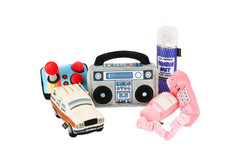Pet owners worry about their pets during the chaos of a move. There are some steps to take before, during and after that can make the transition safer and more comfortable for your pet.
Vet Visit
Before moving day, it is a good idea to talk to your veterinarian. Make sure the pet is up to date on its rabies shot and other important inoculations. Get shot documentation and vet records to take with you. Ask for advice about motion sickness. Get a microchip, if you don't already have one. If the animal does run away during the move, you should be able to quickly locate it.
Travel Preparations
An appropriate kennel is your best friend, even on local moves. If the animal will be flying, make sure the kennel matches current airline requirements. For overnight car travel, find out which hotels on your route will let you bring your animal into the room with you. Make sure you have all necessary supplies, including a harness and leash for each animal, even your cats.
Hiring a Moving Company
When you are hiring a moving company, be sure to talk with your moving company about your pets. Professionals like BC Alberta Movers can pack your things, leaving you free to keep an eye on your cat or dog. Your movers should be consulted about the best place for your pet during packing and moving out. Suggestions include its kennel, a locked bathroom or even the neighbor's house.
Traveling
Don't feed your pets for about two hours before leaving. On the road, cut their feedings to one a day. Water is the only priority. Often animals will stop eating due to stress, anyway. Still, resist giving them table food. Stomach troubles might be your reward for this kindness. Hold back treats, unless they need coaxing into their kennels. For health and safety, the humane society recommends that you limit their time alone in a car to ten-minute intervals.
Adjustment
Once their routine is re-established, dogs generally calm down and adjust very quickly to their new surroundings. Unfortunately, most cats will run away if allowed outside. Try walking it on a leash several times a day for about a month before allowing it more freedom outside. Indoor cats may take a month or more to adjust. Love, kind words and routine will go a long way toward a successful adjustment.
With a little preparation, moving can be less stressful for you and for your pet.
 My name is Lizzie Weakley and I am a freelance writer from Columbus, Ohio. I went to college at The Ohio State University where I studied communications. I enjoy the outdoors and long walks in the park with my 3-year-old husky Snowball.
My name is Lizzie Weakley and I am a freelance writer from Columbus, Ohio. I went to college at The Ohio State University where I studied communications. I enjoy the outdoors and long walks in the park with my 3-year-old husky Snowball.
If you like Lizzie's writing style, follow her on Twitter @LizzieWeakley or find her on Facebook.





